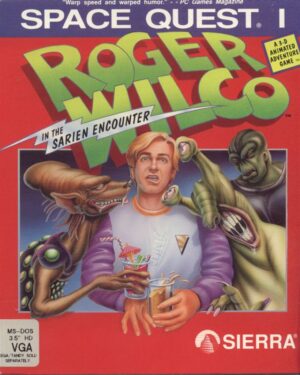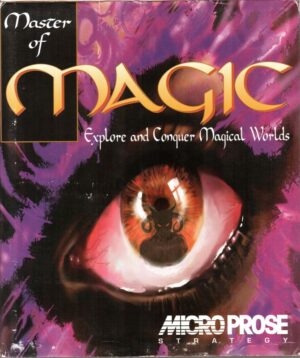Retro Replay Review
Gameplay
Empire II: The Art of War builds upon its classic wargame roots by introducing nuanced mechanics that deepen strategic decision-making. Terrain diversity now plays a pivotal role in every encounter, with forests, hills, and rivers affecting unit movement and sight lines in a more realistic fashion. This added complexity ensures that positioning and reconnaissance are as critical as raw force, elevating each skirmish from a simple board-game affair to a dynamic tactical challenge.
(HEY YOU!! We hope you enjoy! We try not to run ads. So basically, this is a very expensive hobby running this site. Please consider joining us for updates, forums, and more. Network w/ us to make some cash or friends while retro gaming, and you can win some free retro games for posting. Okay, carry on 👍)
One of the most welcome changes is the introduction of graduated damage on land units, replacing the previous binary win-or-lose model. This soft-damage system means that units can now emerge from combat battered and weakened, rather than instantly disappearing upon defeat. This subtle shift rewards careful attrition warfare and encourages players to consider morale and unit cohesion over reckless assaults.
Morale mechanics further enrich the battlefield drama. Units with depleted morale may unexpectedly rout, forcing players to adapt on the fly and rethink their tactical plans. Coupled with weather effects—such as fog reducing visibility or rain slowing movement—Empire II demands constant vigilance and adaptability, making each turn a tense exercise in risk management and foresight.
Graphics
While Empire II: The Art of War retains the tile-based aesthetic familiar to long-time fans, the expanded terrain set adds fresh visual variety. Each landscape type—be it desert dunes, marshlands, or snowy plains—is rendered with distinct color palettes and tile patterns, improving readability and immersion. The clarity of the map tiles ensures that even the most complex battlefields remain easy to parse at a glance.
The redesigned unit icons strike a balance between simplicity and information. Infantry, cavalry, and artillery are immediately recognizable, while subtle overlays indicate damage levels and morale status. This visual shorthand minimizes micromanagement, letting players focus on strategy rather than deciphering cryptic symbols. Customizable unit graphics in the scenario editor further allow creative modders to tailor the look of their armies, whether they’re commanding medieval knights or futuristic mechs.
Despite its retro origins, the user interface feels surprisingly modern. Menus are logically structured, and tooltips provide instant feedback on movement ranges, sighting limits, and attack strengths. The improved scenario-creation tools include a drag-and-drop palette for terrain and units, making it easy to preview how your custom maps will look when deployed. Overall, the graphics may not compete with today’s 3D engines, but they excel in clarity and functional elegance.
Story
Empire II does not offer a traditional, linear narrative campaign. Instead, it delivers an emergent story driven by the scenarios you choose or create. Historical battles—from Napoleonic clashes to World War skirmishes—come to life through preset objectives and period-appropriate unit rosters. Players experience the ebb and flow of famous engagements, but the real drama unfolds in their own tactical choices.
The enhanced scenario editor doubles as a storytelling workshop. You can script reinforcement schedules, set weather events, and define victory conditions that reflect dramatic plot twists or alternate-history hypotheses. Want to reenact the defense of a besieged citadel at dawn or stage a last-stand against overwhelming odds? The editor’s flexibility lets you craft memorable narratives that go far beyond static board layouts.
For those seeking a narrative backbone, community-created campaigns fill the gap. Dedicated fans have published sprawling multi-scenario chronicles, complete with background lore and interlocking objectives. This user-driven content ecosystem ensures that there’s always a fresh storyline to explore, whether you’re reenacting a classical war or inventing a wholly new conflict from scratch.
Overall Experience
Empire II: The Art of War offers a deep, intellectually engaging experience for strategy enthusiasts who relish granular control over every battlefield variable. Its layered mechanics—damage, morale, weather, and reinforcements—combine to create a living, breathing theater of war that rewards careful planning and adaptability. Matches can be long and intricate, but each decision carries real weight, making victories all the more satisfying.
The learning curve can be steep for newcomers unfamiliar with hex-and-counter wargames. However, the in-game tutorials and comprehensive help screens provide a solid foundation, guiding players through the basics before they tackle more advanced tactics. Fans of classic computer wargames will appreciate the respect paid to historical detail, while modders and creative players will find endless possibilities in the scenario editor’s robust toolset.
Though it lacks the graphical flash of modern AAA titles, Empire II’s strengths lie in its depth, customizability, and the compelling narratives that emerge from player-driven scenarios. Whether you’re drawn to meticulously planned historical recreations or wildly imaginative fantasy battles, this game delivers a richly textured strategy playground. For those who value cerebral challenges and creative freedom over cinematic spectacle, Empire II: The Art of War remains a timeless addition to any wargaming library.
 Retro Replay Retro Replay gaming reviews, news, emulation, geek stuff and more!
Retro Replay Retro Replay gaming reviews, news, emulation, geek stuff and more!









Reviews
There are no reviews yet.